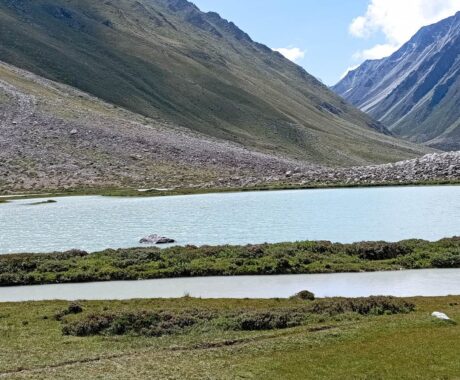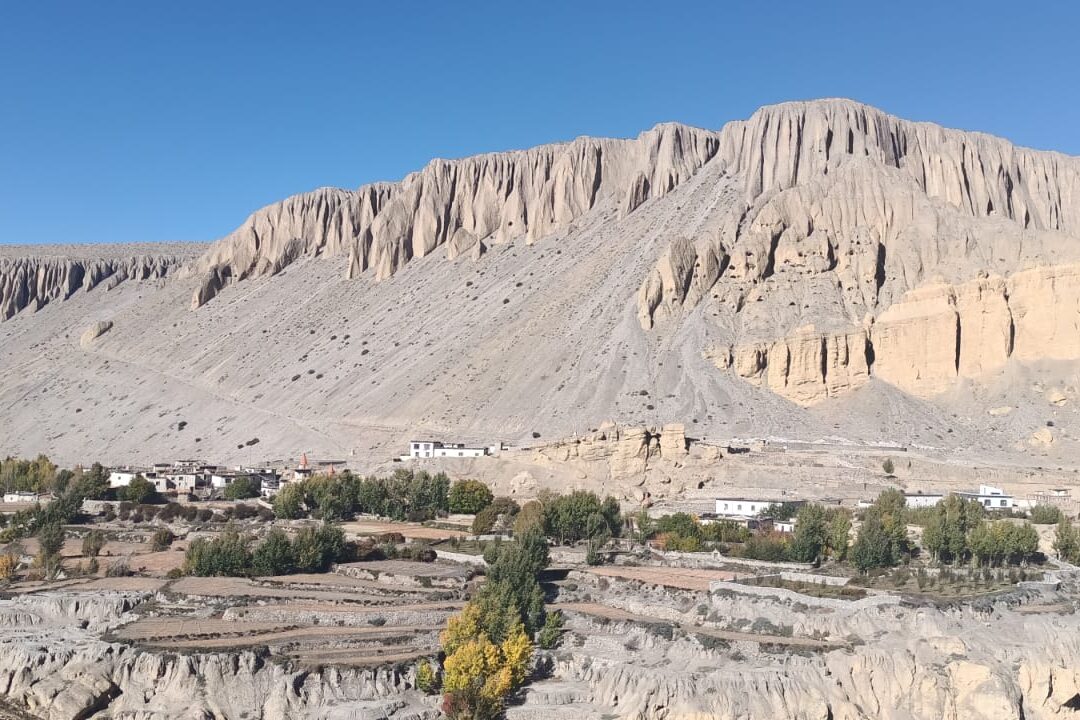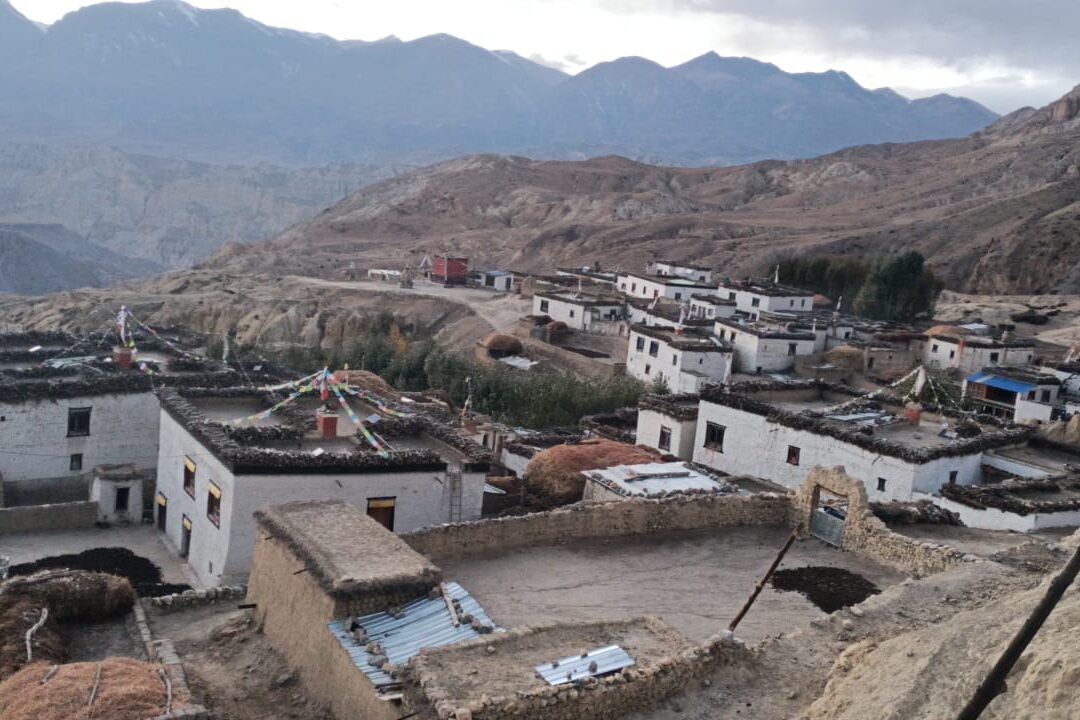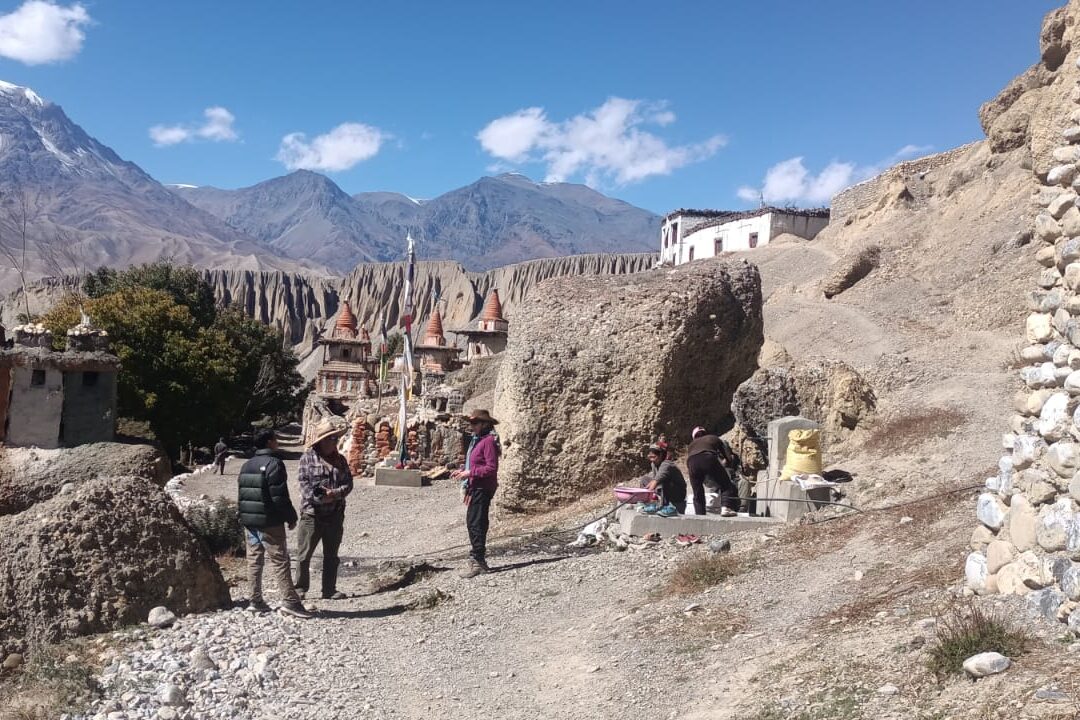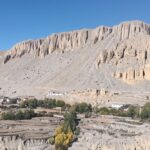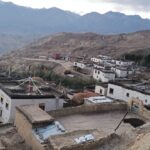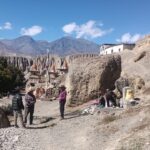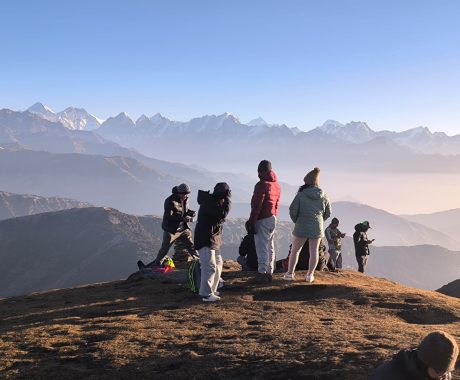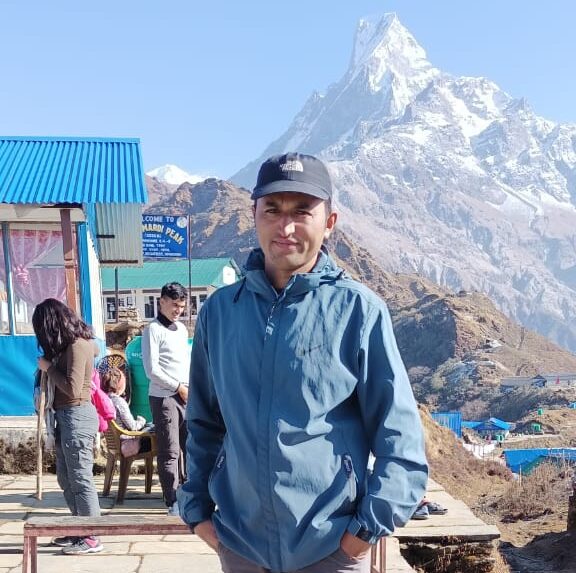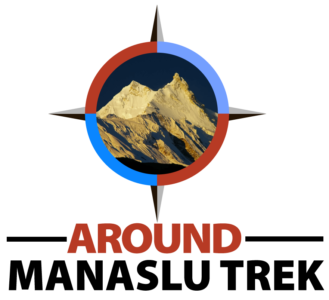Upper Mustang By Trek
Trip Facts
- Destination Mustang Region Nepal
- Activity Trekking
- Duration 19 Days
- Trip Difficulty moderate
- Max. Altitude 4400m
- Best Time March & October
- Start and End Kathmandu - Kathmandu
- Meals Breakfast / Lunch / Dinner
- Accommodation 5 star hotel in Kathmandu & and Pokhara /star level hotel during the trek
- Group Size 2 - 10
- Transportation Private Transport & Flight ticket Kathmandu - Pokhara -Jomsom Round trip
Trip Highlights
- Visit world heritage sites in Kathmandu
- Scenic flight from Kathmandu to Pokhara and Pokhara to Jomsom
- Explore the preserved culture and lifestyle of the Tibetans
- The walled city of Lho Manthang and the remote Trans-Himalayan region
- Take a walk through the stunning villages of Mustang, like Jomsom, Kagbeni, Tamagaon, Geling, Ghemi, and Tsarang
- Explore the walled city of Lo Manthang
- Visit old Buddhist places in Upper Mustang - like monasteries, caves, and palaces
- Feel the spiritual vibes of Upper Mustang
- Breathtaking vistas of the Annapurna, Dhaulagiri, and Nilgiri mountain ranges
- The area is charged with spiritual energy from the Chorten, Gompas, Prayer Flags, and other ritual activities
Introduction
Lo Manthang is a testament to its blend of history, architecture, archaeology, and religious heritage, providing visitors with a glimpse into the captivating tapestry of Nepal’s cultural legacy.
Upper Mustang is also known as the ‘Last Forbidden Kingdom’, and trekking in this region will give you the feeling of the planet Mars. Let’s begin with the history of the Upper Mustang. According to the archaeologists initially, this place was used as a burial chamber 2,000 years ago.
These spaces later became homes about 1,000 years ago, potentially offering safety during conflicts. In the 1400s, people moved to villages, and the caves transformed into places for meditation and reflection. The upper Mustang is an upper part of the Mustang District. It is a semi-independent Tibetan kingdom situated to the north of the Annapurna and Dhaulagiri Mountains.
Lo Manthang in Nepal is an ancient city found in the Mustang District. It used to be the capital of the Kingdom of Lo and is now a UNESCO World Heritage Site. The walled city sits high up at 3,840 meters above sea level, surrounded by tall mountains. During this trek, you will reach the final point of this trek, which is Lo Manthang.
Lo Manthang became the walled capital of the Kingdom of Lo in 1380, built by Ame Pal. He oversaw the construction of the city wall and many buildings that are still there today. When the Prithvi Narayan Shaha of Gorkha created Nepal by bringing together various small kingdoms in the 18th century, Lo became a part of this new nation but retained its own hereditary rulers.
This settlement was surrounded by more than 6 meters of higher walls, and it contained the temple, home, and palace. The walls that surround the village are its fortress. You can also see the fourteen guard towers inside the village. This defense system was made to protect against enemies.
The whole city is a heritage site, which UNESCO says is one of its kind. It was once situated on a bustling trade route between Tibet and Nepal, up until Tibet’s annexation in the 1950s. This settlement is encircled by the highest mountain in the Himalayas, and the land around Lo-Manthang is airy. The harvest of the food and the vegetables is possible only one month out of the year. The rest of the time, the community depends on the herd of food.
Yaks are the quintessential animal of the Himalayas. The region was cut off from the outside world until 1992, when foreign tourists were given permission to visit. To protect this region from mass tourism, visitors need to apply for a permit costing around 530 dollars. The region is paved with thousands of Buddhist caves where monks go to worship.
The valley hosts captivating festivals such as Tiji and Yartung. “Tiji” comes from “Tempa Chirim,” meaning “Prayer for World Peace.” The festival celebrates the legend of Dorjee Sonnu, believed to be Buddha’s incarnation. He saved the Mustang kingdom from the destructive demon Man Tam Ru, causing storms and droughts. Every May, unique Tibetan rites and ritual dances are performed for three days to mark this celebration.
Similarly, Yartung is a horse racing festival that happens every August on a full moon day. People celebrate with drinking and traditional Tibetan and Thakali dances. Lamas, monks, and locals come together to say goodbye to the summer season.
Inside Lo Manthang is a famous big monastery called Dragkar-Thegchen Ling Gompa. They built this monastery in the 13th century, when the area was called the Kingdom of Lo under the rule of King Ama Pal. Right now, Lamas lives in this monastery. Unfortunately, some old things in the monastery got damaged in earthquakes that happened in the 16th and 17th centuries. Besides this, other famous monasteries are Chode Gompa, the Monastic Museum, Jampa Monastery, and Thupchen Gompa.
Also, the famous Damodar Kunda (lake) lies on a restricted upper Mustang between Kagbeni and Muktinath. It is a holy place for Buddhists and Hindus. The elevation of the Damodar Kunda is 5400 meters. According to Hindu mythology, anyone who visits this kunda and takes a deep bath will be freed from all sin.
Muktinath is another special place in Mustang where a temple dedicated to Vishnu, a Hindu deity, can be found. It’s not just for Hindus, though; Buddhists also think it’s a sacred spot. This temple is in the Muktinath Valley, right at the bottom of the Thorong La mountain pass in Mustang, Nepal. People visit this place for religious reasons, and it’s a peaceful spot nestled in the mountains. You can see the majestic Muktinath Temple framed against the stunning backdrop of the towering Dhaulagiri Himalaya, which creates a breathtaking scene.
Not only is this place famous for the ancient religious site, but the adventurous horseback riding and mountain bike riding take this tour to a different level. You don’t have to be an experienced horse rider to ride a horse in the Mustang. During the Yartung festival, locals and outsiders show their horse-riding skills. It will be unlimited fun to enjoy the people dancing, feasting, and seeing monks praying for four continuous days during this festival.
Another popular adventure you can try is the mountain bike tour. The ideal terrain makes this place a biking paradise. For your information, whether you go trekking or mountain biking, you should hire a guide and porter. Additionally, you cannot trek or bike ride alone, as this area is restricted.
Further, the Upper Mustang Trek is a combination of cultural experiences and unique, breathtaking landscape beauty. Even though the permit price is higher than in other trekking regions of Nepal, the aim is to regulate tourism and preserve the culture of this region. The Upper Mustang trek is absolutely worth it; hurry up and book now to start your adventurous journey with us.
Major Attractions of Royal Mustang Trek
- The Last Forbidden Kingdom:Explore the secret world with ancient stories and landscapes full of mysteries.
- Experience Tibetan Culture: In Mustang, you’ll find a mix of people from various backgrounds, such as Gurung, Thakali, and Lopa. The Lopa, who are the original inhabitants of Mustang, bring a unique culture and language to the region. Mustang is rich in Buddhist culture, similar to that of the Tibetan people.
- Ancient Buddhist Monasteries, Caves, and Palaces: The Upper Mustang is special because of its old stories and art. There are many ancient Buddhist monasteries, caves, and palaces to explore. Upper Mustang used to be a kingdom in the past.
- The Walled City of Lo Manthang: Lo Manthang, the capital of the former Kingdom of Lo, was built in the 15th century on a high plateau situated at an elevation of 3800 meters above sea level. Inside the walls of Lo Manthang, you’ll find key landmarks like the palace and monasteries—Jampa Lakhang and Thupchen Lakhang, both dating back to the 15th century, and Choede Lakhang, built in the 18th century.
- Religious Sites: You can explore famous religious sites like Damodar Kunda, Muktinath Temple, Marpha Monastery, etc.
- Mystic Landscapes and Isolated Villages:You can experience the diverse and unique landscape at every step in the upper Mustang. Some famous villages you visit are Lo Manthang, Charang/Tsarang, Ghami/Ghemi, Chosar, Thinggar/Thingkar village, Yara village, Tangye village, and many more. Roughly, there are nearly ten thousand caves in this region.
- Festivals: Tiji is a grand Tibetan-Buddhist festival celebrated in Lo-Manthang, Upper Mustang. It’s a special and important event for the people there. It is celebrated for three days.
- Horse Racing: During the Yartung festival, locals and outsiders show their horse-riding skills. Also, people celebrate this four-day-long festival by singing, dancing, and praying in the monasteries.
- Tibetan Horseback Ride: In Mustang, the horses used for riding are called Tibetan ponies, which are the local breed. These sturdy ponies are perfect for the rocky terrain, making the horseback riding experience unforgettable.
- Mountain Biking: This tour is designed for adventurous souls with high fitness levels. Expect most of the riding to be above 3000 m, with a thrilling journey featuring 16 passes over 3500 m.
Outline Itinerary
Day 01: Kathmandu Arrival – 1,300m
Day 02: Kathmandu Sightseeing – 1,300m
Day 03: Fly from Kathmandu to Pokhara – 850m
Day 04: Fly from Pokhara to Jomsom – 25 min and trek to Khaghbani 2,800m – 03 hrs
Day 05: Trek to Chhusang 3,200m – 06 hrs
Day 06: Trek to Samar 3,600m – 05 hrs
Day 07: Trek to Ghuling 3,600m – 06 hrs
Day 08: Trek to Charang 3,600m – 07 hrs
Day 09: Trek to Lo Manthang 3,800m – 07 hrs
Day 10: Rest day Lo Manthang to explore 3,800m – 07 hrs
Day 11: Trek to Yara 3,600m – 06
Day 12: Rest day Yara hike to Ghar 3,600m – 04 hrs
Day 13: Trek to Tangge 3,300m – 07 hrs
Day 14: Trek to Chhusang 3,200m – 08 hrs
Day 15: Trek back to Jomsom 2,700m – 07 hrs
Day 16: Fly from Jomsom to Pokhara 25 min drive to hotel – 850m
Day 17: Rest day in Pokhara – 850m
Day 18: Fly from Pokhara to Kathmandu – 1,300m
Day 19: Departure – 1,300m
Alternative Treks Around Upper Mustang Trek
If you’re intrigued by the unique landscapes and culture of the Upper Mustang but seek a slightly different trekking experience in the same region, consider these fantastic alternatives:
- Upper Mustang Overland Adventure – 13 Days: A more accessible option to explore the hidden kingdom of Mustang by road, still offering rich Tibetan culture and stunning landscapes.
- Narphu Valley Trek – 14 Days: A remote trek that provides a similar off-the-beaten-path experience, with breathtaking views and access to traditional Tibetan villages.
- Tilicho Lake & Manang Helicopter Tour – 1 Days: For those who want a quick yet spectacular experience, this helicopter tour offers amazing views of Tilicho Lake and the surrounding mountains.
Detailed Itinerary
-
Day 01: Kathmandu Arrival pickup to hotel - 1,300m
After you land at Tribhuvan International Airport on the Kathmandu Tour, our staff from the Himalayan Guides team will greet you and take you to the hotel. Once you're settled, our guide or tour leader will provide a brief overview of your tour. If you have any questions, you can get all the information you need about your trip. You'll spend the night at this splendid hotel.
Altitude: 1300mMeals: BreakfastAccommodation: 5 star hotel in Kathmandu -
Day 02: Kathmandu Sightseeing stay same hotel in Kathmandu - 1,300m
After your morning meal, our cultural guide will pick you up directly from your hotel. Then, we will visit several historical places listed by UNESCO. After our visits, we will return to the hotel later in the evening. You can choose which UNESCO World Heritage site we will visit.
Here are the options:
- Swayambhunath (Monkey Temple)
- Kathmandu Durbar Square
- Bhaktapur Durbar Square
- Patan Durbar Square
- Boudhanath
- Pashupatinath
- Changunarayan
Altitude: 1300mMeals: BreakfastAccommodation: 5 star hotel in Kathmandu -
Day 03: Fly from Kathmandu to Pokhara - 850m
On the third day of your Upper Mustang trek covering Kathmandu and Pokhara, you'll take a short flight to Pokhara, renowned for its breathtaking scenery. It takes around 25 minutes to reach Pokhara Airport. Upon arrival, you'll be taken to your hotel to check in, allowing you some time to relax and freshen up.
Altitude: 850mMeals: BreakfastAccommodation: 5 star hotel in Pokhara -
Day 04: Fly from Pokhara to Jomsom and trek to Khaghbani - 2,800m
Today, we'll catch an early morning flight from Pokhara to Jomsom. The flight from Pokhara to Jomsom has a duration of 20 minutes. Once in Jomsom, we will cross the river and trek along the eastern bank until we reach Ekle Bhatti. Following the trail along the river, we will head towards Kagbeni, the northernmost village in the region, at an elevation of 2,810 meters. You can explore Kagbeni without a permit. It's located where the Jhong Khola and Kali Gandaki Rivers meet. The village is known for its distinctive Tibetan culture and friendly hospitality.
Altitude: 2800mMeals: Breakfast / Lunch / DinnerAccommodation: Tea house -
Day 05: Trek to Chhusang 3,040m - 06 hrs
Today, you start with a quick walk through the village to a checkpoint, spending around 30 minutes on paperwork. After that, you step into Upper Mustang, and it's like entering a completely different place—the scenery changes, and you'll spot the Kali Gandaki Gorge. If the riverbed is dry, you can stroll along it for about 30 minutes. If it's not, you'll trek over a ridge to the east. Past Tiri Gaon, you'll take a high path to Tangbe, the first significant village. The whole journey lasts about 5 hours.
Altitude: 3040mMeals: Breakfast / Lunch / DinnerAccommodation: Tea house -
Day 06: Trek to Samar 3,650m - 05 hrs
We will hike early in the morning after having breakfast in Chussang. We will cross the Kali Gandaki River and then ascend to Chele La Pass for stunning views. The trek leads through Chele's charming village. After leaving Chele, take a scenic path carved into the rocks to reach Taklam-la (3,625m) and Djong-la (3,660m), enjoying beautiful views along the way. Further walking along the descent trail leads to the village of Samar, where you will check into a teahouse. Samar is a popular place for lunch, and there are two lodges available: the Himali Hotel and the Annapurna Hotel. Rest well to acclimatize to the altitude and enjoy the ultimate scenery and beauty of the village.
Altitude: 3650mMeals: Breakfast / Lunch / DinnerAccommodation: Tea house -
Day 07: Trek to Ghuling 3,750m - 07 hrs
Today, you will begin your journey from Samar to Ghiling with stunning pictures of mountains and villages in the background. The trail takes you to the Nyi La pass, where you can enjoy an amazing view of the region. After reaching Ghiling in the afternoon, you will stay in a teahouse or guesthouse. Later, after relaxing in the tea house, you will go explore the village. You can visit the famous Ghiling Monastery, which shares a glimpse of the region's cultural legacy and rich heritage. It's a day filled with nature, culture, and a bit of rest.
Altitude: 3750mMeals: Breakfast / Lunch / DinnerAccommodation: Tea house -
Day 08: Trek to Charang 3,560m - 05 hrs
Today's trek begins with a steep downhill path and a tricky trail. We cross a suspension bridge over the Ghami Khola and then begin climbing. The trail is lined with beautiful mani walls. Afterward, we cross the Tsarang La Pass at 3,870 meters and arrive at Tsarang village. The village is situated in the Charang Chu Canyon, featuring a large fortress and a red gompa to the east. We will stay overnight in Tsarang.
Altitude: 3560mMeals: Breakfast / Lunch / DinnerAccommodation: Tea house -
Day 09: Trek to Lo Manthang 3,840m - 05 hrs
We begin our trek by going downhill, crossing a river, and then climbing up to Lo La Pass at 3950 m. From there, we see the beautiful Lo Manthang village. Descending, we reach Lo Manthang, a charming walled village with great views of the Himalayas, including Nilgiri, Tilicho, Annapurna I, Bhrikuti Peak, and Damodar Kunda. We will stay overnight in Lo Manthang.
Altitude: 3840mMeals: Breakfast / Lunch / DinnerAccommodation: Tea house -
Day 10: Rest day Lo Manthang to explore 3,840m - 05 hrs
Altitude: 3840 mMeals: Breakfast / Lunch / DinnerAccommodation: Tea house -
Day 11: Trek to Yara 3,550m - 07 hrs
Today, the trek distance from Lo Manthang to Yara will be approximately 17 km. We will walk for a whole six hours, going over a bridge and passing through Dhigaun and Surkhang villages. After leaving Lo Manthang, we will follow the steady trail. Then it climbs two small passes before plunging through a spectacular canyon to Dhi village. We will continue along the river bed to the finish in Yara, leaving Dhi.
Altitude: 3550mMeals: Breakfast / Lunch / DinnerAccommodation: Tea house -
Day 12: Rest day Yara hike to Ghar and luri gompa bacvk top Yara 3,550m - 05 hrs
Ghar is a small village situated to the north of the Annapurna and Dhaulagiri mountain ranges. Today, you will hike to Ghar, which is renowned for Ghar Monastery or Ghar Gompa. Ghar Gompa sits atop a hill at an altitude of about 3,800 meters (12,467 feet).
The monastery provides expansive views of rugged landscapes, deep valleys, and snowy mountain peaks. It is one of the most picturesque trekking destinations, although reaching Ghar Gompa demands a certain level of effort due to its remote location.
Altitude: 3550mMeals: Breakfast / Lunch / DinnerAccommodation: Tea house -
Day 13: Trek to Tangge 3,220m - 08 hrs
The trek distance from Yara to Tangge is around 18.3 kilometers (11.3 miles). You need to walk for about 6 to 7 hours to reach Tangge from Yara village. You can discover ancient Tibetan culture, Buddhist monasteries, sky caves, and the diverse traditions of the local ethnic communities in this region. The Yara to Tangge trek follows an up-and-down trail in arid land.
It offers spectacular views of rugged mountains, pristine rivers, and breathtaking landscapes. Yara village serves as the hub for both the Muktinath to Damodar Kunda Trek and the Trei La Pass Trek via Nar Phu Valley. In Tangge village, you'll find numerous ancient caves and monasteries that add to the charm of exploration.
Altitude: 3220mMeals: Breakfast / Lunch / DinnerAccommodation: Tea house -
Day 14: Trek to Chhusang 3,040m - 08 hrs
Altitude: 3040mMeals: Tea houseAccommodation: Breakfast / Lunch / Dinner -
Day 15: Trek back to Jomsom 2,700m - 08 hrs
Today, after leaving Chhusang, we will stop at Kagbeni for lunch. The Chhusang to Jomsom trek is the final part of the Upper Mustang trek in Nepal, covering 22 kilometers in about 6 to 7 hours. The trail is mostly flat, leading to Jomsom, a trading hub in Lower Mustang at 2720 meters above sea level. This trek offers stunning landscapes, monuments, ancient villages, and impressive mountain views, making it a must-do for adventurous travelers in Nepal.
Altitude: 2700mMeals: Breakfast / Lunch / DinnerAccommodation: Tea house -
Day 16: Fly from Jomsom to Pokhara 850m - 30 min
Today, you will take a quick 20-minute flight from the city of apples to the tourist paradise of Pokhara. Enjoy the afternoon surrounded by breathtaking mountain views. Spend the night in a lakeside hotel for a stunning view of Phewa Lake. It's a perfect way to relax and enjoy the beauty of Pokhara.
Altitude: 850mMeals: Breakfast / Lunch / DinnerAccommodation: 4 star hotel in Pokhara -
Day 17: Rest day in Pokhara - 850m
There are lots of things that you can do on this day. Pokhara is not only a place for adventurous sites; it is also rich in natural beauty. Pokhara is also the tourist hub, where you can find numerous cafes, restaurants, clubs, and many more places to spend your time. Also, you can try if you are interested in adventurous activities like paragliding, zip-flying, boating, and cannoning activities in Pokhara.
Here are the famous places that you can visit that are near the lakeside.
1) Davis Falls (Patale Chhango)
2) Gupteshwor Mahadev Cave in Pokhara day tour; 3) Tashi Ling Tibetan Village
4) Bindhyabasini Temple; 5) World Peace Pagoda
6) International Mountain MuseumAltitude: 850mMeals: Breakfast / Lunch / DinnerAccommodation: 5 star hotel in Pokhara -
Day 18: Fly from Pokhara to Kathmandu Or Drive to Kathmandu 1300m 30 min/ 08 hrs
Altitude: 1300mMeals: Breakfast / lunch / DinnerAccommodation: 5 star hotel in Kathmandu -
Day 20: Departure - 1,300m
Today is the day that you will finally leave this beautiful country full of memories and emotions. Gather your stuff and say bye to the mountains. The Himalayan guides say farewell and thank you for trekking with us. Our person will take you to the airport three hours before your flight. We hope to see you again for more fun trips. Safe travels!
Altitude: 1300mMeals: Breakfast
What's included
- International and Domestics Pick up and Drop
- 5 star hotel in Kathmandu & Pokhara (Bed and Breakfast plan)
- Meals (Breakfast, lunch, dinner) and Tea/Coffee per day during the trek
- Kathmandu – Pokhara round-trip airfare (with airport tax, if any)
- Pokhara_to Jomsom round_trip airfare (with airport tax, if any )
- TIMS (Trekkers' Information Management System) Card and Annapurna Conservation permits/Upper Mustang Special Permits
- Government Taxes, local taxes (if any)/ Climbing permits
- Professional Guide with licensed holder English Speaking
- 1 Porter per two trekkers/ carry 20kg
- Insurance and food for Guide and porter
- Trekking route map
- Certificate of Completion
- First Aid Kits
- Farewell dinner at a nice restaurant
- Sleeping bag and Down jacket Trekking pole( After trekking, return back to us )
- Private vehicle for Kathmandu Sightseeing
What's not included
- International Airfare
- Your Travel Insurance
- Rescue & Evacuation.
- Nepal Visa fee (mostly on arrival)
- Lunch and Dinner in Kathmandu and Pokhara
- Tips for Guide, Porter, and Driver
- Drinks and beverages – bottled water / hot water/alcohol
- Chocolates and sweets
Trekking Gears
To ensure a safe and comfortable trek in the Himalayan region, it is highly recommended to bring the appropriate equipment and gear to cope with the cold temperatures. The following is a list of essential equipment and gear for Upper Mustang By Trek, which can be purchased either in the Thamel market or brought from your home country:
The following basic checklist for trekking and hiking equipment should assist you in packing for our trips. Keep in mind the importance of minimizing the weight of your clothing and gear. Your packed trek bag should weigh less than 15 kilograms. Remember, this is merely a guideline and not everything listed is essential to bring.
- Lightweight thermal gloves
- Hiking boots
- 2 pairs of thin and 2 pair of thick woolen socks.
- Trekking trousers
- Waterproof (trousers / jacket)
- Base layer shirts
- Underwear (4)
- Sun hat or scarf
- Thin, lightweight (inner socks) (4)
- Head lamp ,spare bulbs, & batteries
- Small padlock to lock trek bag
- Plastic bags - for keeping items dry inside trek bag
- Small wash towel
- Basic First Aid Kit
- Sun protection (including total bloc for lips)
- Trekking poles
- Down jacket
- Water bottle 1 liters
- Hand wash
- Snow glasses and sunglasses
- Duffle bag or kit bag to carry to gear while trekking.
Additional Equipment Checklist
- Headband or Beanie
- Swiss army knife
- Lip guard
- Sun lotion
- Scarf or neck Band
- Rain jacket/ Umbrella
Map
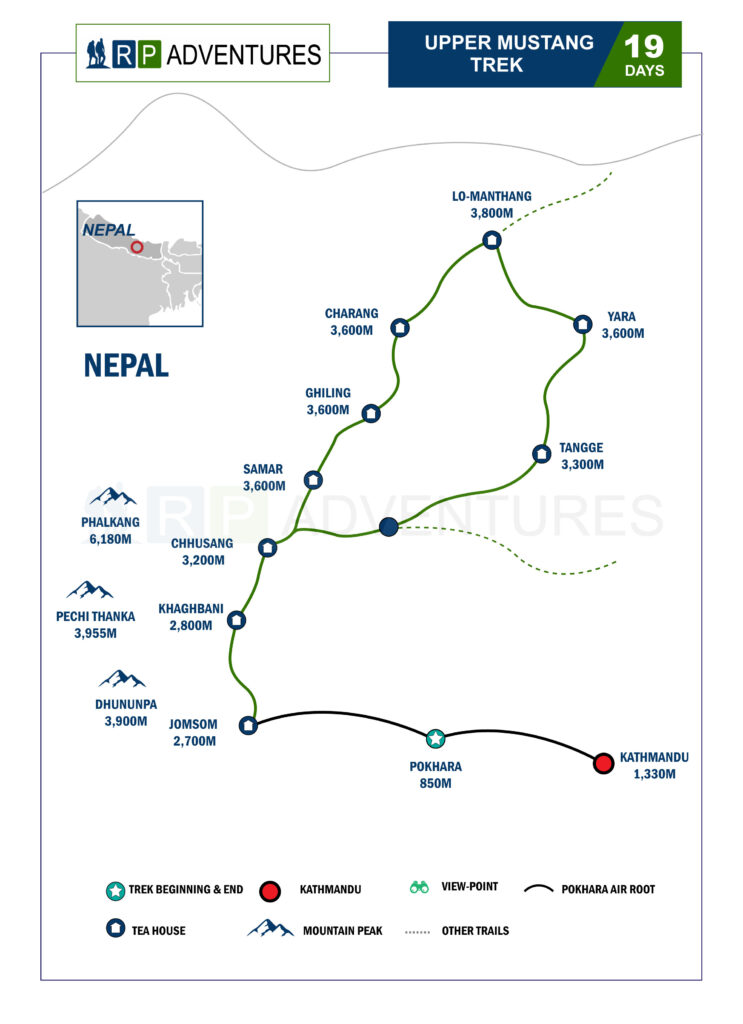
FAQs of Upper Mustang By Trek
-
How is the food and accommodation during the Mustang tour and trek?
During a Mustang trek, food and lodging can vary. Along the route, tea houses provide meals like noodles, rice, and dal. The taste and quality differ but aim to be filling. Trekkers might need to bring snacks for personal preferences or dietary needs. Accommodation consists of basic tea houses with beds and shared bathrooms. As you trek higher, facilities may become more rustic, with limited hot water and electricity. Some tea houses offer extras like Wi-Fi, but not everywhere. While not luxurious, accommodations fulfill basic needs and offer an authentic experience in the beautiful Mustang region. -
What documents do we need to complete the Upper Mustang trek?
For the Upper Mustang trek, you will need several documents. These include your original passport, a copy of your visa, and a passport-sized photo. You should also have the guide's license and insurance, along with a paper from a registered government-licensed company. Additionally, special permits and ACAP (Annapurna Conservation Area Permit) permits are required. -
How much does the trip cost?
The cost will vary depending on your time and budget, ranging from $2,000 up to $10,000. -
How much does the permit cost, and how many people are allowed to go in a single group?
The cost of a permit for the Upper Mustang trek in Nepal is USD $500 per person for a 10-day permit. A group size ranging from 2 to 50 people can travel together. -
Can solo trekkers visit the Upper Mustang Trek?
Solo trekking in Upper Mustang is not permitted. The Nepalese government requires trekkers to obtain permits and trek with a registered guide or as part of a group. This regulation aims to ensure the safety of trekkers and preserve the delicate environment and culture of the region. Therefore, if you wish to trek in Upper Mustang, you will need to do so with a registered trekking agency or hire a licensed guide. They will assist you in obtaining the necessary permits and ensure compliance with local regulations. -
What transportation is used to transfer from Kathmandu to Pokhara and Jomsom?
The primary transportation method from Kathmandu to Pokhara and Jomsom is domestic flights. Departing from Tribhuvan International Airport in Kathmandu, a short 25-30 minute flight lands at Pokhara Airport. From Pokhara, a 20-25 minute flight takes you to Jomsom Airport, serving as a gateway to the Mustang region. The return journey follows the same route in reverse. -
When is the best time to visit Upper Mustang for a tour and trek?
The best time to visit Upper Mustang for a tour and trek is during the spring (March to May) and autumn (September to November) seasons. During these times, the weather is generally stable, with clear skies and comfortable temperatures, making it ideal for trekking and enjoying the scenic beauty of the region. Additionally, cultural festivals often occur during these seasons, adding to the richness of the experience. -
Why is the Upper Mustang trek permit costly, and why is it necessary to go through an agency?
The Upper Mustang trek permit is relatively expensive due to conservation efforts and regulations aimed at preserving the region's environment and culture. The area is designated as a restricted zone by the Nepalese government, necessitating a special permit. Additionally, trekking in Upper Mustang requires a registered guide or trekking agency to ensure safety and compliance with local regulations, as well as to support the local economy and maintain the delicate balance of the ecosystem. -
What is the distance in kilometers from Kathmandu to Lo-Manthang and back to Kathmandu?
The distance from Kathmandu to Lo-Manthang and back to Kathmandu is approximately 600 kilometers round trip. -
What is the location of the Upper Mustang trek?
The Upper Mustang trek is located in the Mustang district of north-central Nepal, bordering Tibet. -
How many famous caves and monasteries are there in Upper Mustang?
There are several famous caves and monasteries in Upper Mustang, including the renowned Luri Gompa, Choser Cave, and Yara Gompa, among others. -
How old are all the caves and monasteries in Upper Mustang?
The caves and monasteries in Upper Mustang vary in age, with some dating back several centuries. Many of these sites have historical and cultural significance, with some caves believed to be thousands of years old, while others were constructed more recently. -
Why is Lo-Manthang called the old city and Himalayan medical hub center?
Lo-Manthang is referred to as the old city because of its ancient history and well-preserved traditional architecture, reflecting its significance as a former capital of the Kingdom of Mustang. Additionally, it is known as the Himalayan medical hub center due to the presence of medical facilities and services that cater to the needs of residents and trekkers in the remote Himalayan region. -
How far is it from Lo Manthang to the Koro-La border?
The distance from Lo-Manthang to the Koro-La border is approximately 30 kilometers. -
How famous is Damodar Kunda and why?
Damodar Kunda is highly renowned due to its religious significance, particularly among Hindus and Buddhists. It is considered a sacred pilgrimage site, nestled in the Mustang region of Nepal at an altitude of about 4,890 meters (16,040 feet) in the Annapurna Conservation Area. Hindus believe that taking a dip in the waters of Damodar Kunda cleanses them of sins and fulfills their spiritual aspirations. Similarly, Buddhists regard it as a holy site associated with Guru Rinpoche (Padmasambhava), a revered figure in Tibetan Buddhism. Its remote location amidst stunning Himalayan landscapes further adds to its allure, attracting both religious devotees and adventurous trekkers. -
How high is Damodar Kunda lake, and what is the meaning of Kali Gandaki River?
Damodar Kunda Lake is situated at an altitude of approximately 4,890 meters (16,040 feet) above sea level in the Mustang region of Nepal. It holds religious significance for both Hindus and Buddhists. The Kali Gandaki River, on the other hand, is a major river in Nepal and a tributary of the Ganges River in India. The name "Kali Gandaki" translates to "Black Gorge" in English. "Kali" means "black" or "dark," while "Gandaki" means "gorge" or "canyon." The river gets its name from the dark-colored sediment it carries, which contrasts strikingly with the surrounding landscape. -
Why is Mustang called the forbidden kingdom, and why is the king still important there?
Mustang is called the "Forbidden Kingdom" because of its historical isolation from the rest of Nepal and the outside world. It was restricted to foreigners until the early 1990s, contributing to its mysterious and untouched allure. The king of Mustang continues to hold significance in the region due to its unique status as a former kingdom within Nepal. While Mustang is now integrated into the federal democratic system of Nepal, the king retains cultural and symbolic importance to the local population. His presence serves as a link to the region's rich history and traditions, providing a sense of continuity and identity for the people of Mustang. -
What is the meaning of Zong (wall of mud and stone), and how important and how old is it?
The term "Zong" refers to a wall constructed from mud and stone, typically used for fortifications or as a boundary marker in Tibetan and Himalayan regions. These walls serve various purposes, including protection against invaders, delineation of territories, and preservation of cultural heritage. In the context of Mustang, the Zong walls are crucial for safeguarding ancient settlements and monasteries, as well as for defining the boundaries of villages and agricultural lands. They also hold cultural significance, reflecting the traditional building techniques and historical defenses of the region. The exact age of the Zong walls in Mustang varies, with some sections dating back several centuries. These walls have withstood the test of time and remain integral to the landscape and identity of the Mustang region, highlighting their enduring importance. -
What is the meaning of Lo-Manthang, and how big is it?
The words "Min" and "Thang" combine to form "Lo-Manthang," and according to local people, it means an Ayurvedic hub. It is neither too big nor too small, comprising around 200 houses in this village. -
Is this a famous tour and trekking route in Nepal?
Yes, it is very famous for the tour and trekking, attracting different people to experience various landscapes, mountains, high mountain valleys, and typical mud house villages. -
What types of culture do the Mustang people follow?
Mustang people are typical Thakali and Gurung individuals who follow Tibetan Buddhism and culture. -
How famous is the Tiji festival in Upper Mustang, and during which time do people celebrate it?
Tiji is one of the important festivals in Upper Mustang, celebrated on May 5, 6, and 7 in 2024. -
How remote is Upper Mustang, and how much has it changed in the last 40 years?
Upper Mustang is extremely remote, located in the Himalayan region of Nepal near the Tibetan border. It is isolated by rugged terrain and lacks modern infrastructure, making access difficult. In the last 40 years, Upper Mustang has undergone significant changes, primarily due to increased connectivity and tourism. Improved roads and transportation have made the region more accessible, leading to an influx of visitors. This has brought both economic opportunities and challenges, impacting traditional ways of life and the natural environment. Additionally, modern amenities and technologies have gradually made their way into the region, altering aspects of daily life for residents. -
Why is Upper Mustang called a mountain desert place, and why do people refer to it as mini Tibet?
Upper Mustang is referred to as a mountain desert place due to its unique geographical features, characterized by arid landscapes, sparse vegetation, and rugged terrain reminiscent of desert environments. Its high altitude and location in the rain shadow of the Annapurna and Dhaulagiri mountain ranges contribute to its dry climate, making it resemble a desert. People often refer to Upper Mustang as "mini Tibet" because of its striking resemblance to the Tibetan Plateau in terms of culture, landscape, and architecture. The region shares historical ties with Tibet and has been influenced by Tibetan Buddhism for centuries. Additionally, the traditional Tibetan-style architecture, monasteries, and cultural practices in Upper Mustang further reinforce its association with Tibet, earning it the nickname "mini Tibet." -
Is horse riding tour famous in Mustang, and what is the best time to do it?
In Mustang, ten years ago, horse riding tours were very popular. Nowadays, with the availability and affordability of jeeps, horse riding tours are not as common. However, if people still wish to experience horse riding, they can do so in the areas around Lo-Manthang, Charang, and Ghar Gompa. -
Why are "chhorten and stupa" so different in Upper Mustang and Upper Dolpo?
This is a traditional and typical chorten in Nepal. In modern regions of Nepal, chortens are modified using different materials and colors. However, the old chortens, such as those in Mustang and Upper Dolpo, still adhere to the traditional style and are not allowed to be modernized due to their location in restricted areas and their status as symbols of the forbidden kingdom. -
What is the meaning of Luri cave and Luri gompa, and Li-Ghar gompa?
**Luri Cave and Luri Gompa:** Luri Cave, an ancient cave complex in Upper Mustang, features exquisite Tibetan Buddhist murals dating back to the 15th century. Luri Gompa, an adjacent monastery, complements the cave's spiritual significance. **Li-Ghar Gompa:** Li-Ghar Gompa, located in Mustang, serves as a Buddhist monastery with traditional Tibetan architecture. Beyond its religious functions, it fosters community gatherings, cultural events, and plays a crucial role in preserving Mustang's unique heritage. -
Is it possible to do a helicopter tour in Lo-Manthang and Damodar Kunda?
Yes, it is possible. If we want to visit those places, we have to follow the government rules and buy a 10-day permit for a one-hour visit. If yes, you can do it. -
What types of birds and animals can we see during the tour and trek, and why are animals small in size?
During the Upper Mustang tour and trek, you may encounter various birds like Tibetan Snowcock and animals such as wild yaks, donkeys, and domestic livestock. The harsh Himalayan environment influences animals to adapt with smaller body sizes, conserving energy and enhancing survival in the challenging terrain. These adaptations facilitate their efficient navigation through the rugged landscapes of Mustang. -
What is the tipping rule for the driver, porter, and guide?
From your full package, ten percent is deducted to tip the trekking members. -
Can we have a historical guide in Lo-Manthang?
Yes, normally we hire a tour guide for Lo-Manthang. Lo-Manthang does not have many tour guides; only one or two guides are available. If we don't get a guide, we have to follow the monk. -
How many world heritage sites are there in Kathmandu?
There are seven UNESCO World Heritage Sites in Kathmandu, Nepal: 1. **Kathmandu Durbar Square:** A historic palace complex with ancient temples and shrines, showcasing traditional Nepalese architecture. 2. **Patan Durbar Square:** Known for its well-preserved medieval architecture, including temples, palaces, and courtyards. 3. **Bhaktapur Durbar Square:** Famous for its medieval architecture, pottery, and vibrant culture, offering a glimpse into ancient Newari traditions. 4. **Swayambhunath Stupa (Monkey Temple):** An ancient religious complex atop a hill, adorned with Buddhist stupas, shrines, and iconic monkey residents. 5. **Pashupatinath Temple:** A sacred Hindu temple complex on the Bagmati River, known for its pagoda-style architecture and importance in Hindu rituals. 6. **Boudhanath Stupa:** One of the largest stupas in Nepal, featuring a massive mandala, prayer wheels, and a vibrant atmosphere of Tibetan Buddhism. 7. **Changunarayan Temple:** An ancient Hindu temple with intricate carvings, dedicated to Lord Vishnu, showcasing the rich artistic heritage of the region. -
What are the possibilities in emergency cases?
In case of emergency, you will receive a helicopter rescue, or you will be transported to a major city by land ambulance for your recovery. -
Why RP Adventures is different than others agency?
RP Adventures offers an exclusive and high-end trekking experience with its expensive packages. The allure lies in the luxurious accommodations, highly qualified and experienced guides with excellent educational and medical training, ensuring a safe and enriching journey. Private ground transportation adds to the comfort, while the option of helicopter sharing for aerial transport, especially in remote areas, enhances the adventure. The commitment to quality services and safety justifies the elevated cost, providing clients with a truly premium and unforgettable trekking and tour experience. -
Do you have a budget package for the Upper Mustang trek?
Yes, we offer budget packages for trekking that allow you to choose your own meals. While the trekking routes and permits remain the same, the level of service, including accommodations, food, and guide/porters, varies based on your budget. You can opt for accommodation ranging from 2-star to 5-star hotels, providing flexibility and affordability for your trekking adventure.
Trip You May Like
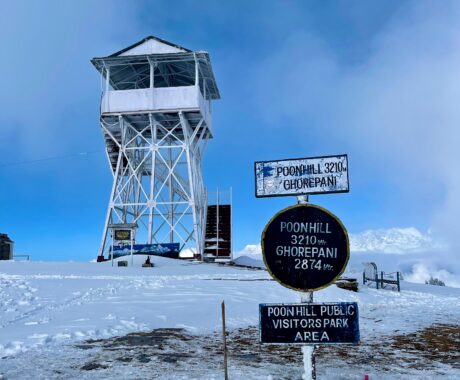
Ghorepani Poon Hill Trek
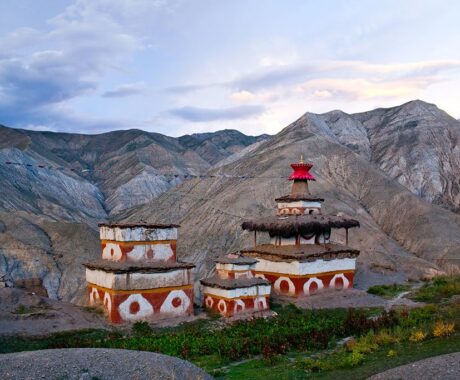
Upper Dolpo Trek
